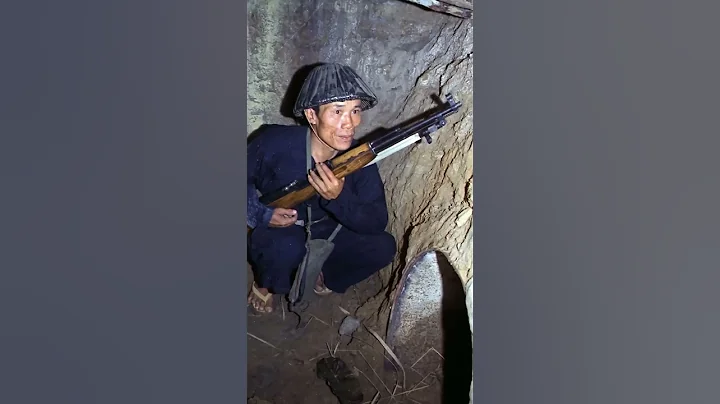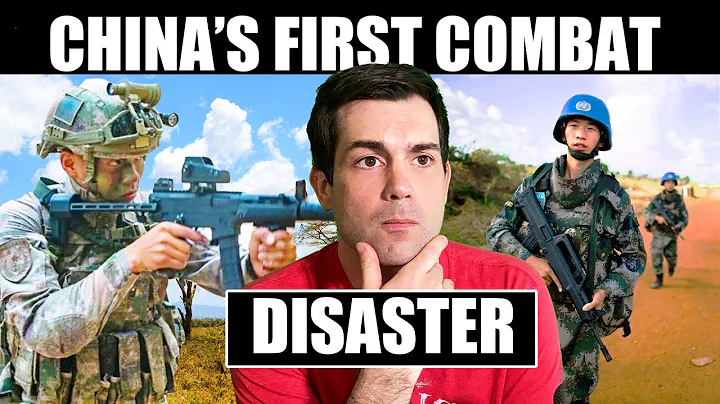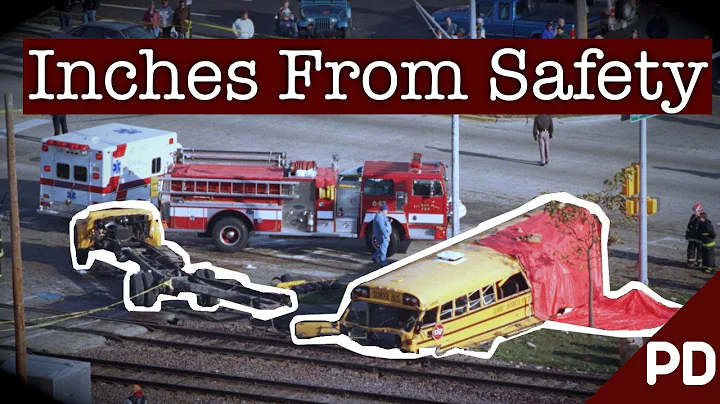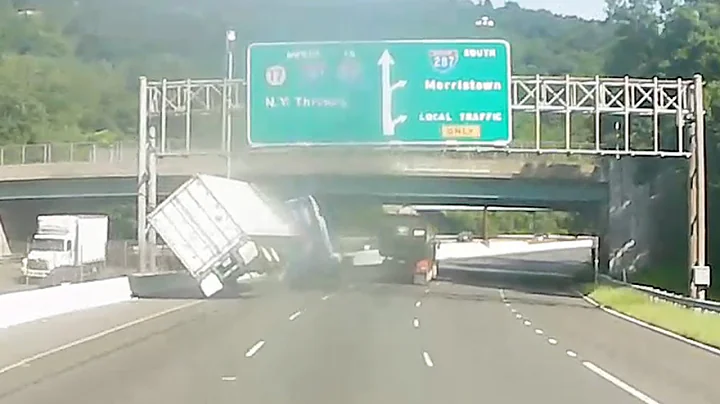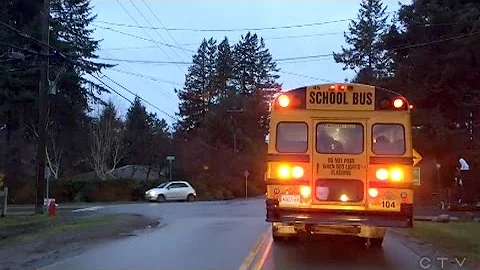drama "First Blood 3" has such a shocking scene: The protagonist played by Sylvester Stallone Rambo and his partner are surrounded by a large and well-armed army. In the end, the protagonist Rambo not only did not back down, but told his partners to rush over and surround them. In this way, the two men rushed into the enemy's formation and killed the enemy to pieces.
Regarding such a plot, most viewers just laugh and don't take it seriously. However, in the self-defense counterattack against Vietnam, such a battle did occur in the 126th Division of the People's Liberation Army. During the mission of searching for remnants of the enemy, five soldiers suddenly discovered that two platoons of Vietnamese troops were ambushing in the surrounding area. The situation was very critical.
At this time, Wang Xikun, the acting platoon leader who led the team, could not tolerate any hesitation. He could only use the strength of 5 people to surround and annihilate the Vietnamese army. After a fierce battle, 63 enemies were killed, effectively protecting the main force of the company. of marching safety.

Caoping The Vietnamese army is fighting more and more
Caoping Province in Vietnam is densely covered with mountains, rivers and jungles. There are natural stone caves everywhere, and the mountains are high and the ravines are deep. It is a hellish place where tanks have to hide when they leave the road. Since Ho Chi Minh and others established North Vietnam , Caoping Province has always been the rear area in the eyes of the Vietnamese army.
Before the outbreak of the self-defense counterattack against Vietnam, the Vietnamese army set up a large number of material storage sites in Caoping Province. There are many agent training schools, and every county has an airstrip. Therefore, the People's Liberation Army set Vietnam's Gaoping Province as a key offensive area from the beginning.
According to pre-war intelligence analysis, the People's Liberation Army believed that the number of Vietnamese troops in the northern part of Gaoping Province was about 19,000. However, it was not until February 25, when the People's Liberation Army broke through Gaoping City that it discovered that the number of Vietnamese troops in Gaoping increased, and there were far more. Data estimated before the war started.
In fact, there was no problem with the People's Liberation Army's intelligence work before the war. The problem was that after the battle started, the People's Liberation Army's Eastern Front Corps quickly surrounded Gaoping City in Vietnam from the north and south. The general strategic intention had been grasped by the Vietnamese army. Therefore, the First Military Region of Vietnam quickly increased its troops to Cao Bang within a few hours of the start of the war.
A province in Vietnam is only as big as an ordinary county-level administrative region in China. The place is small and the distance is short, and the troop recruitment speed is also relatively fast. About 130 kilometers to the west of Gaoping City is Lang Son City , and less than 100 kilometers to the south is Vietnam's Beihu Province. Cao Bang Province is surrounded by not only the 3rd Division, 327th Division, 337th Division and 312th Division of the Vietnamese Central Army.
Moreover, each province in Vietnam has a local infantry regiment and artillery regiment, each provincial capital city has an infantry battalion, each county has an infantry battalion, and cities above the county level have 1 to 2 public security stations plus government agencies and units. , armed militia troops drawn from natural villages, making it impossible for the Vietnamese army in the entire Gaoping Province of Vietnam to fight alone.

On February 17 alone, the 126th Division under the 42nd Army fought in the area of Gaosheng Bridge in Shi'an County, Vietnam, with division-level troops who came to reinforce Gaoping City, Vietnam. Therefore, the Battle of Gaoping was the most difficult battle in the entire self-defense counterattack against Vietnam.
In the early days of the Caoping Battle, the Vietnamese army mainly involved the civilian army and local troops in the battle. After the Shuojiang defense line was broken through by the People's Liberation Army, the First Military Region of Vietnam broke up the entire Vietnamese regular army in the northern part of Caoping to fight guerrilla warfare with the Chinese army.
The insidious and cunning Vietnamese army will hold on if they can be beaten, and run away if they can't be beaten. They usually form a company or a platoon as a unit, setting up ambushes along some major roads in the war zone. When they see large troops of the People's Liberation Army, they generally will not take action. , only when they encounter the People's Liberation Army's baggage troops or small groups of troops, they will kill them.
In order to severely combat the arrogance of the Vietnamese army, the People's Liberation Army began to implement a dragnet-style clearing operation in northern Gaoping on February 25. Since then, there have been fewer battles above the battalion level in this area.
Mountain encounter
html On March 2, the 162nd Division of the 54th Army of the People's Liberation Army had just assisted the 125th Division of the 42nd Army in opening up the road from Fuhe County to Guangyuan County in Vietnam. General Xu Shiyou ordered: The troops will fight back again, all the way from Guangyuan County Search to Fuhe County to expand the results.Thedrama "First Blood 3
" has such a shocking scene: The protagonist played by Sylvester Stallone Rambo and his partner are surrounded by a large and well-armed army. In the end, the protagonist Rambo not only did not back down, but told his partners to rush over and surround them. In this way, the two men rushed into the enemy's formation and killed the enemy to pieces.Regarding such a plot, most viewers just laugh and don't take it seriously. However, in the self-defense counterattack against Vietnam, such a battle did occur in the 126th Division of the People's Liberation Army. During the mission of searching for remnants of the enemy, five soldiers suddenly discovered that two platoons of Vietnamese troops were ambushing in the surrounding area. The situation was very critical.
At this time, Wang Xikun, the acting platoon leader who led the team, could not tolerate any hesitation. He could only use the strength of 5 people to surround and annihilate the Vietnamese army. After a fierce battle, 63 enemies were killed, effectively protecting the main force of the company. of marching safety.

Caoping The Vietnamese army is fighting more and more
Caoping Province in Vietnam is densely covered with mountains, rivers and jungles. There are natural stone caves everywhere, and the mountains are high and the ravines are deep. It is a hellish place where tanks have to hide when they leave the road. Since Ho Chi Minh and others established North Vietnam , Caoping Province has always been the rear area in the eyes of the Vietnamese army.
Before the outbreak of the self-defense counterattack against Vietnam, the Vietnamese army set up a large number of material storage sites in Caoping Province. There are many agent training schools, and every county has an airstrip. Therefore, the People's Liberation Army set Vietnam's Gaoping Province as a key offensive area from the beginning.
According to pre-war intelligence analysis, the People's Liberation Army believed that the number of Vietnamese troops in the northern part of Gaoping Province was about 19,000. However, it was not until February 25, when the People's Liberation Army broke through Gaoping City that it discovered that the number of Vietnamese troops in Gaoping increased, and there were far more. Data estimated before the war started.
In fact, there was no problem with the People's Liberation Army's intelligence work before the war. The problem was that after the battle started, the People's Liberation Army's Eastern Front Corps quickly surrounded Gaoping City in Vietnam from the north and south. The general strategic intention had been grasped by the Vietnamese army. Therefore, the First Military Region of Vietnam quickly increased its troops to Cao Bang within a few hours of the start of the war.
A province in Vietnam is only as big as an ordinary county-level administrative region in China. The place is small and the distance is short, and the troop recruitment speed is also relatively fast. About 130 kilometers to the west of Gaoping City is Lang Son City , and less than 100 kilometers to the south is Vietnam's Beihu Province. Cao Bang Province is surrounded by not only the 3rd Division, 327th Division, 337th Division and 312th Division of the Vietnamese Central Army.
Moreover, each province in Vietnam has a local infantry regiment and artillery regiment, each provincial capital city has an infantry battalion, each county has an infantry battalion, and cities above the county level have 1 to 2 public security stations plus government agencies and units. , armed militia troops drawn from natural villages, making it impossible for the Vietnamese army in the entire Gaoping Province of Vietnam to fight alone.

On February 17 alone, the 126th Division under the 42nd Army fought in the area of Gaosheng Bridge in Shi'an County, Vietnam, with division-level troops who came to reinforce Gaoping City, Vietnam. Therefore, the Battle of Gaoping was the most difficult battle in the entire self-defense counterattack against Vietnam.
In the early days of the Caoping Battle, the Vietnamese army mainly involved the civilian army and local troops in the battle. After the Shuojiang defense line was broken through by the People's Liberation Army, the First Military Region of Vietnam broke up the entire Vietnamese regular army in the northern part of Caoping to fight guerrilla warfare with the Chinese army.
The insidious and cunning Vietnamese army will hold on if they can be beaten, and run away if they can't be beaten. They usually form a company or a platoon as a unit, setting up ambushes along some major roads in the war zone. When they see large troops of the People's Liberation Army, they generally will not take action. , only when they encounter the People's Liberation Army's baggage troops or small groups of troops, they will kill them.
In order to severely combat the arrogance of the Vietnamese army, the People's Liberation Army began to implement a dragnet-style clearing operation in northern Gaoping on February 25. Since then, there have been fewer battles above the battalion level in this area.
Mountain encounter
html On March 2, the 162nd Division of the 54th Army of the People's Liberation Army had just assisted the 125th Division of the 42nd Army in opening up the road from Fuhe County to Guangyuan County in Vietnam. General Xu Shiyou ordered: The troops will fight back again, all the way from Guangyuan County Search to Fuhe County to expand the results.Guangyuan County leads to Fuhe County, and only Vietnam No. 3 Highway is suitable for marching. Although both divisions were equipped with cars and tanks, the troops could not concentrate on the search. Because after the troops are concentrated, the suddenness of the battle will disappear. By then, the broken-up Vietnamese soldiers will have crawled into the deep mountains and old forests, and it will be like shooting sparrows with cannons.
To this end, a division of more than 10,000 men needs to disperse part of its troops, usually in companies, carrying small-caliber artillery and machine guns across mountains and ridges to search for remnants of the enemy. A part of the infantry is concentrated to protect the baggage troops. When necessary, the baggage troops are responsible for providing fire support to the infantry troops performing search missions.

About 300 meters ahead, there is a long and narrow mountain valley. The rocky hills on both sides of the road are steeper. There are 5 higher rocky mountains on one side and 3 higher rocky mountains on the other side. In order to facilitate communication , the division headquarters had previously classified these highlands as highlands 1-8. Further ahead of the highland group is the settlement of Dong E Village in Vietnam.
The company commander had to divide the sharp knife squad into two groups. One group scouted three highlands on the left along Route 3, and the other group scouted five highlands on the right. Then, Wang Xikun, the acting platoon leader of the 2nd Platoon, was ordered to take four soldiers from the 4th Platoon to go around the back of the road at 5 highlands on the right to conduct reconnaissance. The main force was on alert on the spot. In this way, if it encountered an ambush by the Vietnamese army, it would be able to deal with it calmly.
As soon as Wang Xikun and the others left the road and got into the wet dense forest, fighting started in the valley. From the sound of gunshots, it was clear that the Vietnamese army had at least one squad and used light machine guns. Right now, if this group of Vietnamese troops is not dealt with early, not only will the main force be unable to move forward, but the following companies will also be blocked here, which will be dangerous at night.
In order to rush to the No. 5 highland closest to them as soon as possible, Wang Xikun ignored the bushes and weeds that were taller than a person. He used the barrel of his gun to push away the thorns and let the soldiers behind him pass by. Then the soldiers in front used the same method. Clear the way for the comrades behind you.
Walking through a thorny bamboo forest, the path was blocked by a 10-meter-high boulder. The sound of gunfire was getting closer and closer. Pan Xila, the 4th squad leader, became anxious and was about to pull out his machete and prepare to cut a way out. Wang Xikun asked to take a ladder and climb up to the top of the boulder to have a wider view.
As soon as he climbed up the boulder, Wang Xikun discovered through the telescope that a squad of Vietnamese troops emerged from the unnamed hill behind Highland No. 5, and two of them were walking towards Highland No. 5 carrying rocket launchers . Obviously, the Vietnamese army had just arrived here, and they probably wanted to take advantage of the terrain to ambush the 6th company here.

Wang Xikun quickly pulled the 4th squad leader Pan Xila to the top of the boulder and asked him to use the squad machine gun to aim at the Vietnamese army. He grabbed the bush next to the boulder and rolled to the other side of the boulder, rushing to the 5th squadron before the Vietnamese army arrived. Destroy them at the foot of the highland.
As soon as Pan Xila set up his machine gun, the Vietnamese army discovered him, and a hail of bullets hit the boulder.
At this time, Wang Xikun and Pan Xila had formed a crossfire, and the Vietnamese army was unable to form a battle formation due to the obstruction of bushes and grass. The two fired at the Vietnamese army with short bursts, killing two Vietnamese soldiers at once.
Soldiers Shen Zhanjun, Wang Yayao, and Zheng Taiyin all climbed to the top of the boulder, jumped to the other side of the boulder, and followed Wang Xikun to charge towards the Vietnamese army. The retreat route of the Vietnamese army was blocked by machine guns. They wanted to lie down in the bushes and pretend to be dead, but were called out by Pan Xila one by one. The remaining three or four Vietnamese soldiers fled towards the unknown high ground without caring about their head and tail.
surrounded them
After climbing to the top of Highland 5, Wang Xikun did not find that there were Vietnamese troops here, while a fierce battle was going on on Highland 2 ahead. At this time, an 82mm mortar company from the regiment rushed to the scene one after another, and the comrades in the artillery company began to use mortars to bomb high ground No. 2.
Wang Xikun was very anxious, but he could only search forward one by one.When they reached the top of Highland No. 4, they found about two platoons of Vietnamese troops in the ravine at the junction of Highland No. 4 and Highland No. 3. At this time, these Vietnamese soldiers were squatting behind a half-meter-high rammed earth wall. Only two or three of them exposed half of their heads and looked toward the high ground.

Wang Xikun judged that the Vietnamese troops hiding behind the rammed earth wall were in the same group as the Vietnamese troops on Highland 2. They should set up pocket formations here, hoping to wait for the main force of the 6th Company to charge to Highland 2. , rushed out to cut off the 6th company's retreat. The more than 10 Vietnamese soldiers they met just now might be bait. Fortunately, everyone did not continue to pursue them.
Pan Xila grinned, silently loaded bullets into the magazine, and then looked at Wang Xikun.
At this time, among the five people, there was only one squad machine gun, two 56 automatic rifles , and two 56 semi-automatic rifles . The Vietnamese army basically uses automatic rifles , which are difficult to fight. If we send people to run back to bring reinforcements, we are afraid that when the few Vietnamese soldiers who slipped through the net come to join us, the fish will be gone.
Wang Xikun thought carefully and decided to surround the Vietnamese army. He asked Pan Xila to stay on the high ground with a machine gun and blockade the Vietnamese army behind the rammed earth wall from a high position. He led Zheng Taiyin to outflank the Vietnamese army from the left. Shen Zhanjun and Wang Yayao formed a team of two and outflanked them from the right. There happens to be an automatic rifle and semi-automatic rifle on each side.
After the two outflanking teams were in place, Pan Xila fired a short burst of fire at the rammed earth wall. He was alerted and some of the Vietnamese troops ran into the ravine, some ran up the hillside, and some fled towards the back of the ravine. . Pan Xila fired at the back of the ravine, leaving the Vietnamese troops on both sides to Wang Xikun and others. More than 10 Vietnamese soldiers were killed before they even discovered where Pan Xila was.
After six or seven people of the Vietnamese army on the left were killed by Wang Xikun and Zheng Taiyin, the cunning Vietnamese army suddenly fell silent, and the two sides remained motionless for more than half an hour. Since Pan Xila couldn't see Wang Xikun and the others, he was very worried, and the sniper position was no longer effective, so he simply called on Shen Zhanjun and Wang Yao to move closer to Wang Xikun's area at the same time.

5 After the five people regrouped, Wang Xikun ordered the agile Zheng Taiyin to run to move reinforcements, and then led the three people to continue searching along Highland No. 3.
At a very hidden stone crevice at the foot of the mountain on the back of No. 3 Highland Highway, while Wang Xikun was observing the surrounding situation with a telescope, he was suddenly shot and attacked by several Vietnamese soldiers and died heroically on the spot.
Pan Xila, who was furious, used a machine gun to suppress the Vietnamese army's firepower, and ordered the soldiers Shen Zhanjun and Wang Yayao to rush over and kill them with grenades. Unexpectedly, more than 10 Vietnamese soldiers were killed in this battle.
After Pan Xila continued to fight fiercely with two soldiers for half an hour, the ammunition was exhausted. Fortunately, the reinforcements from the 3rd platoon arrived in time; the 3rd platoon discovered it while cleaning the battlefield. Previously, Wang Xikun's Class 4 had killed a total of 63 enemies in Tong'e Village, including 11 enemies killed by Wang Xikun and 22 enemies killed by Pan Xila.
Because of the decisive action of the 4th Squadron, the company's main force was saved from heavy losses, and it also provided a good opportunity for the 6th Company to completely wipe out the enemy defenders in Tong'e Village. In this battle, the 6th Company and the 82nd Mortar Company wiped out the enemy's reinforced company .
After the war, the martyr Wang Xikun was posthumously awarded the first-class personal merit by the Central Military Commission and was awarded the title of "Combat Hero"; Pan Xila was awarded the first-class personal merit and was awarded the honorary title of "Combat Hero" by the Central Military Commission and was promoted to the front line. 2nd platoon leader; Shen Zhanjun was awarded the first-class individual merit; Wang Yayao and Zheng Taiyin were both awarded the second-class individual merit .
Reference:
[1] Wang Lili: The Battle of Punishment: The People's Liberation Army launched a self-defense counterattack against Vietnam [M] Jilin Publishing Group Co., Ltd., 2011: 203-226
[2] Hu Chuanzhi: The Flashing Life and the Magnificent Poems: Remembering Wang Martyr Xikun [J] Guangshan Party History Materials, 1986(1)179-194
When they reached the top of Highland No. 4, they found about two platoons of Vietnamese troops in the ravine at the junction of Highland No. 4 and Highland No. 3. At this time, these Vietnamese soldiers were squatting behind a half-meter-high rammed earth wall. Only two or three of them exposed half of their heads and looked toward the high ground.
Wang Xikun judged that the Vietnamese troops hiding behind the rammed earth wall were in the same group as the Vietnamese troops on Highland 2. They should set up pocket formations here, hoping to wait for the main force of the 6th Company to charge to Highland 2. , rushed out to cut off the 6th company's retreat. The more than 10 Vietnamese soldiers they met just now might be bait. Fortunately, everyone did not continue to pursue them.
Pan Xila grinned, silently loaded bullets into the magazine, and then looked at Wang Xikun.
At this time, among the five people, there was only one squad machine gun, two 56 automatic rifles , and two 56 semi-automatic rifles . The Vietnamese army basically uses automatic rifles , which are difficult to fight. If we send people to run back to bring reinforcements, we are afraid that when the few Vietnamese soldiers who slipped through the net come to join us, the fish will be gone.
Wang Xikun thought carefully and decided to surround the Vietnamese army. He asked Pan Xila to stay on the high ground with a machine gun and blockade the Vietnamese army behind the rammed earth wall from a high position. He led Zheng Taiyin to outflank the Vietnamese army from the left. Shen Zhanjun and Wang Yayao formed a team of two and outflanked them from the right. There happens to be an automatic rifle and semi-automatic rifle on each side.
After the two outflanking teams were in place, Pan Xila fired a short burst of fire at the rammed earth wall. He was alerted and some of the Vietnamese troops ran into the ravine, some ran up the hillside, and some fled towards the back of the ravine. . Pan Xila fired at the back of the ravine, leaving the Vietnamese troops on both sides to Wang Xikun and others. More than 10 Vietnamese soldiers were killed before they even discovered where Pan Xila was.
After six or seven people of the Vietnamese army on the left were killed by Wang Xikun and Zheng Taiyin, the cunning Vietnamese army suddenly fell silent, and the two sides remained motionless for more than half an hour. Since Pan Xila couldn't see Wang Xikun and the others, he was very worried, and the sniper position was no longer effective, so he simply called on Shen Zhanjun and Wang Yao to move closer to Wang Xikun's area at the same time.

5 After the five people regrouped, Wang Xikun ordered the agile Zheng Taiyin to run to move reinforcements, and then led the three people to continue searching along Highland No. 3.
At a very hidden stone crevice at the foot of the mountain on the back of No. 3 Highland Highway, while Wang Xikun was observing the surrounding situation with a telescope, he was suddenly shot and attacked by several Vietnamese soldiers and died heroically on the spot.
Pan Xila, who was furious, used a machine gun to suppress the Vietnamese army's firepower, and ordered the soldiers Shen Zhanjun and Wang Yayao to rush over and kill them with grenades. Unexpectedly, more than 10 Vietnamese soldiers were killed in this battle.
After Pan Xila continued to fight fiercely with two soldiers for half an hour, the ammunition was exhausted. Fortunately, the reinforcements from the 3rd platoon arrived in time; the 3rd platoon discovered it while cleaning the battlefield. Previously, Wang Xikun's Class 4 had killed a total of 63 enemies in Tong'e Village, including 11 enemies killed by Wang Xikun and 22 enemies killed by Pan Xila.
Because of the decisive action of the 4th Squadron, the company's main force was saved from heavy losses, and it also provided a good opportunity for the 6th Company to completely wipe out the enemy defenders in Tong'e Village. In this battle, the 6th Company and the 82nd Mortar Company wiped out the enemy's reinforced company .
After the war, the martyr Wang Xikun was posthumously awarded the first-class personal merit by the Central Military Commission and was awarded the title of "Combat Hero"; Pan Xila was awarded the first-class personal merit and was awarded the honorary title of "Combat Hero" by the Central Military Commission and was promoted to the front line. 2nd platoon leader; Shen Zhanjun was awarded the first-class individual merit; Wang Yayao and Zheng Taiyin were both awarded the second-class individual merit .
Reference:
[1] Wang Lili: The Battle of Punishment: The People's Liberation Army launched a self-defense counterattack against Vietnam [M] Jilin Publishing Group Co., Ltd., 2011: 203-226
[2] Hu Chuanzhi: The Flashing Life and the Magnificent Poems: Remembering Wang Martyr Xikun [J] Guangshan Party History Materials, 1986(1)179-194
